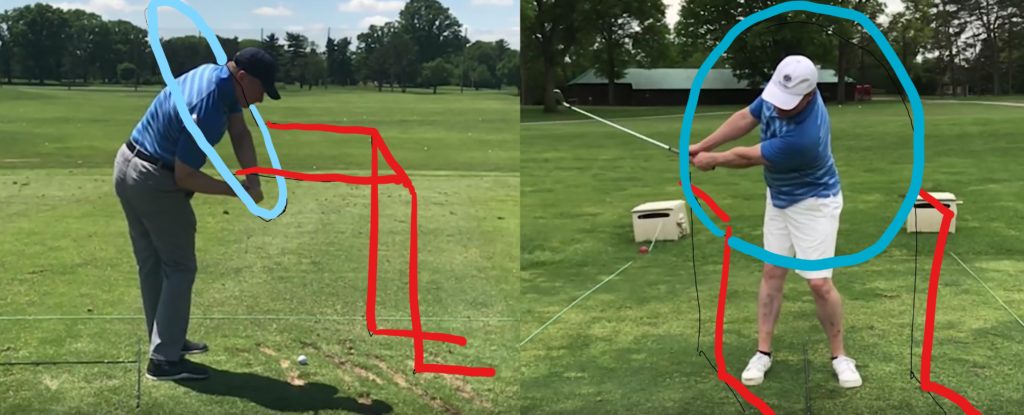October 5, 2018- by Steven E. Greer, MD
I am a little more than two-years into The Golf Project. I finally shot par on nine-holes, for the first time in 32-years (I was actually 3-under on the 8th tee at the Gray course, after an eagle on #3, and blew it with a double bogie and a bogie). I get birdies routinely now, and even had an eagle. I love 300-yard Par-4’s.
Long-irons are what separate the pros from the hacks. I can finally hit good long-irons to Par-3’s. For example, my 215-yard 5-iron to #5 Scarlet usually does the trick. The new Titleist AP3 irons are really forgiving when one mishits from the toe.
My short game is above average by any standard. I am averaging 28-putts per 18 when the PGA average is 29, and I can scramble up and down about half the time. A key discovery for me was to remove the left third and fourth fingers to avoid the yanks. Try it.
I am now hitting 70% of the fairways. Until recently, I was hitting about 10%. This is huge.
All of this is why my handicap has gone down this year from 16 to 7.8. It should be about 5 the next time it updates.
I was reviewing all of the videos and they were painful to watch, quite frankly. I never started to make real progress until about May of this year. That is when I started to realize the concepts behind turning the body and keeping the spine axis stable.
I first began to understand turning the hips and getting the right shoulder to turn down on proper plane. It feels weird as heck to keep that chest down and not lift up.
Then, Jason Carbone and Brian Unk helped me learn how to get a flatter shaft plane in the transition with a flexed left wrist and ulnar deviation. You must “tame the shaft”, as I say. Simple physics will tell you that a long driver will push you upwards if you come down too steeply.
The biggest idea that I have come up with to date is that the golf swing is all about the arc path of the hands, not the clubhead, and almost nobody looks at this. TV announcers always trace the path of the clubhead. The important thing to know is where the hands should go. I devised this Greer Hula Hoop concept, and have yet to actually build it.
 This is where I stand now. I am so close. In the video at the top, you see how I now need to shift my hips in the transition and create a “Reverse K” sooner to get my center of gravity a little farther left, toward the target, before impact. I am still sticking to the right side, as you see with my spine leaning way back after impact.
This is where I stand now. I am so close. In the video at the top, you see how I now need to shift my hips in the transition and create a “Reverse K” sooner to get my center of gravity a little farther left, toward the target, before impact. I am still sticking to the right side, as you see with my spine leaning way back after impact.
Compare my right elbow position to Koepka’s. His is more tucked and in front of his belly near impact. That is because he has already shifted his center of gravity toward the target more than I have. He also ulnar deviates the wrists to get a flatter shaft downward. I can do that too, but I was working on other ideas in this video.
But all in all, this is a big improvement for me. First, my backswing has a good left arm that is tight to the body. I have several drills to help with this.
By the way, all of this could be taught in 15-minutes if people used the Greer Hula Hoop. It is all about the path of the hands, not the clubhead. It took me two-and-a-half years, but I can teach this in 15-minutes.
One needs to know how to work on the swing at the range. This is another big idea that I came up with this year.
